| Home |
| Acknowledgments |
| Conventions |
| Glossary |
| Maps |
| References |
| Links |
| Articles |
| Thumbnails |
| Species
list |
| Family |
| Next
species |
Additional Photos

underside

pale
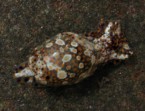
dark

green
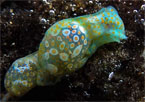
green, little purple
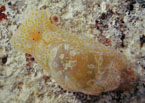
no purple
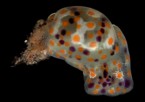
young, 1.8 mm

trailing/mating
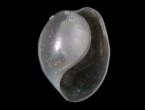
shell
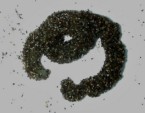
egg mass
_______________
GALLERY

Lamprohaminoea cf. ovalis (Pease, 1868)
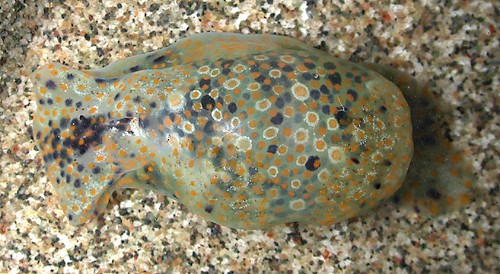
| Maximum size: 18 mm. Identification: This species has a strongly inflated transparent shell without spiral striae. The animal is translucent green variably spotted with orange and purple. The orange spots showing through the shell usually have irregular white rings. Younger animals are often darker than mature ones with proportionately larger spots. As the animals mature, they develop fine rust-brown flecks first on the foot, then on the rest of the body. Rarely, the purple spots may be lacking. It can be distinguished from Lamprohaminoea cymbalum by the lack of broadly confluent orange spots showing through the shell and, usually, by its more extensive purple spotting. (Note 1) It can be distinguished from Lamprohaminoea sp. #1 by its smaller orange spots. Natural history: Lamprohaminoea cf. ovalis is a common nocturnal species found at highly protected to moderately protected sites in rocky and mixed habitats as well as in Halimeda kanaloana beds. It occurs at depths of < 1 to 12 m (< 3 to 39 ft). It is usually associated with patches of the blue-green algae Lyngbya on which it probably feeds. Copulating pairs are often found crawling together at night with the head of the trailing animal overlapping the "tail" of the other. (Note 2) It lays an elongate, white to faintly greenish egg mass containing a "slinky-like" egg string and attached by an adhesive surface. The egg masses usually acquire a coating of sand or detritus in the field and hatch in about four days in the laboratory. Distribution: Big Island, Maui, Oahu, Niihau and Midway: widely distributed in the western & central Pacific; also in the eastern Pacific. Taxonomic notes: This species is probably listed in Severns, 20ll as Haminoea sp. 2 cf. ovalis. It's also mentioned as Haminoea ovalis in Kay, 1979. Given the high variability in this species, there's some chance that DNA work will split it (or indicate hybridization with L. cymbalum?). Photo: CP: 17 mm: Hekili Point, Maui; Nov. 16, 2002. Observations and comments: Note 1: Pam Madden found many animals in an artificial tide pool on the Big Island. Among these were large animals that had reduced purple spotting and a more opaque green background color giving them a closer resemblance to L. cymbalum. However, smaller animals showed intergrading in these traits and animals of all sizes lacked broadly confluent orange spots. The animals were also photographed in the open in late afternoon and had some algal growth on their shells, atypical for L. cf. ovalis. Perhaps, unusual conditions in the pool (different temperature, different water flow, different food, lack of usual predators...) influenced both color characteristics and behavior? (see photos) Note 2: Although not visible from the top, the greatly elongated penis of the posterior animal is inserted in the genital aperture of the first one while they are crawling. When a pair was carefully collected on Sept. 30, 1997 they remained "attached" for over 24 hours before separating. |
| Thumbnails |
Species
list |
Family | Next species | Top |